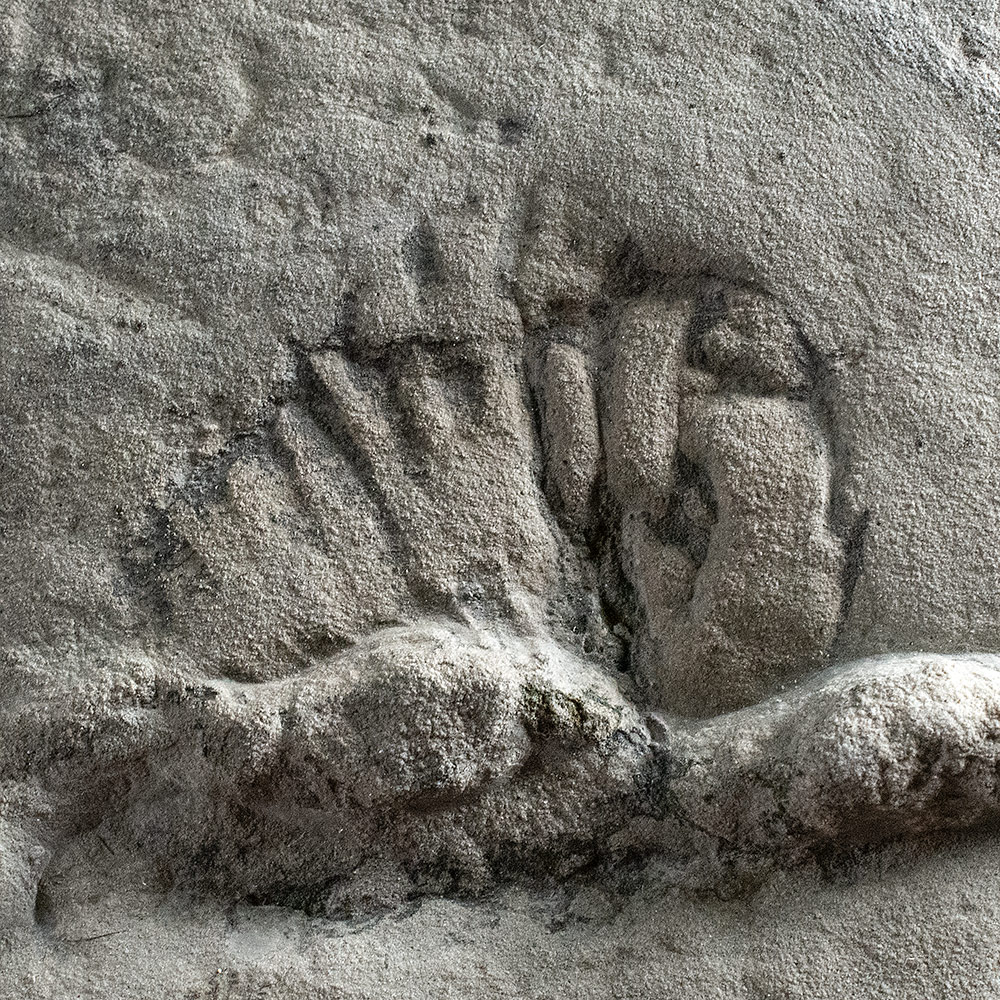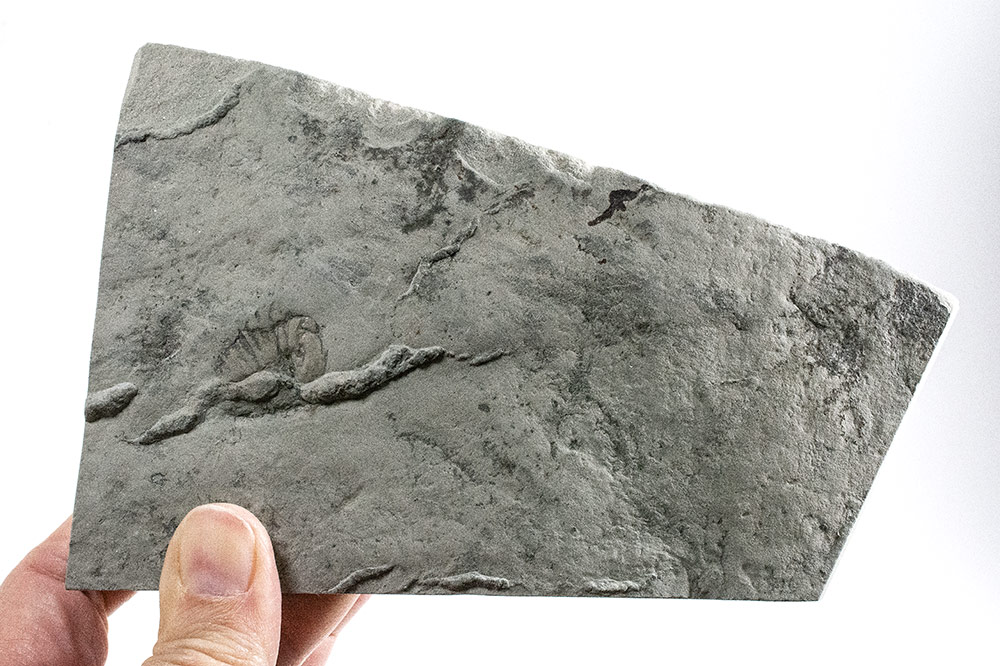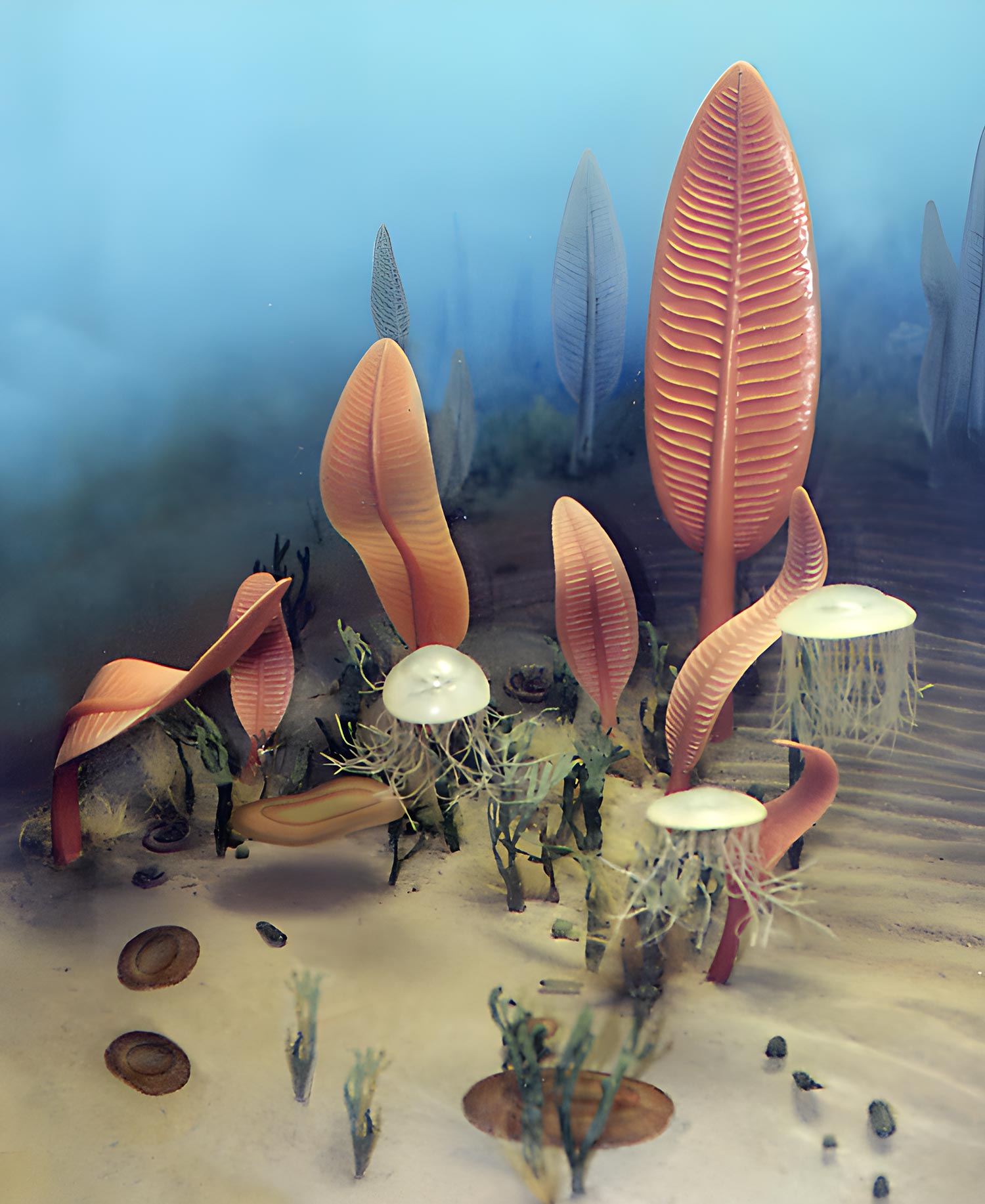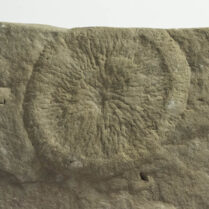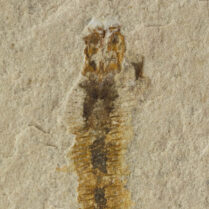Description
Vendia sp.
Precambrian
Penega Formation
East Angelsk, White Sea, Russia.
23mm vendobiont on 175mm slab.
Soft-bodied, Ediacaran. Problematica.
Vendia is a genus of early animal known from the Vendian Period. It has an oval-shaped, segmented body and has been classified within the phylum, Proarticulata, a group which shows the beginnings of bilateral symmetry seen in Paleozoic groups. Vendia apparently died out by the end of the Precambrian and left no descendants. First specimen we have ever had.
The Vendian Period spans about the last 110 million years of the Proterozoic Eon from about 540 to 650 million years ago – a time after a phase of global glaciation. It was during the Vendian that soft-bodied, macroscopic life appeared. By the end of the period, the supercontinent, Rodinia, which formed from the collisions of the major land masses approximately 1.2 billion years ago, had started to fragment and drift away. Those continents (odd loose pieces and mash-ups of the modern continents) would crunch into each other again by the end of the Paleozoic Era to form the supercontinent, Pangaea.

